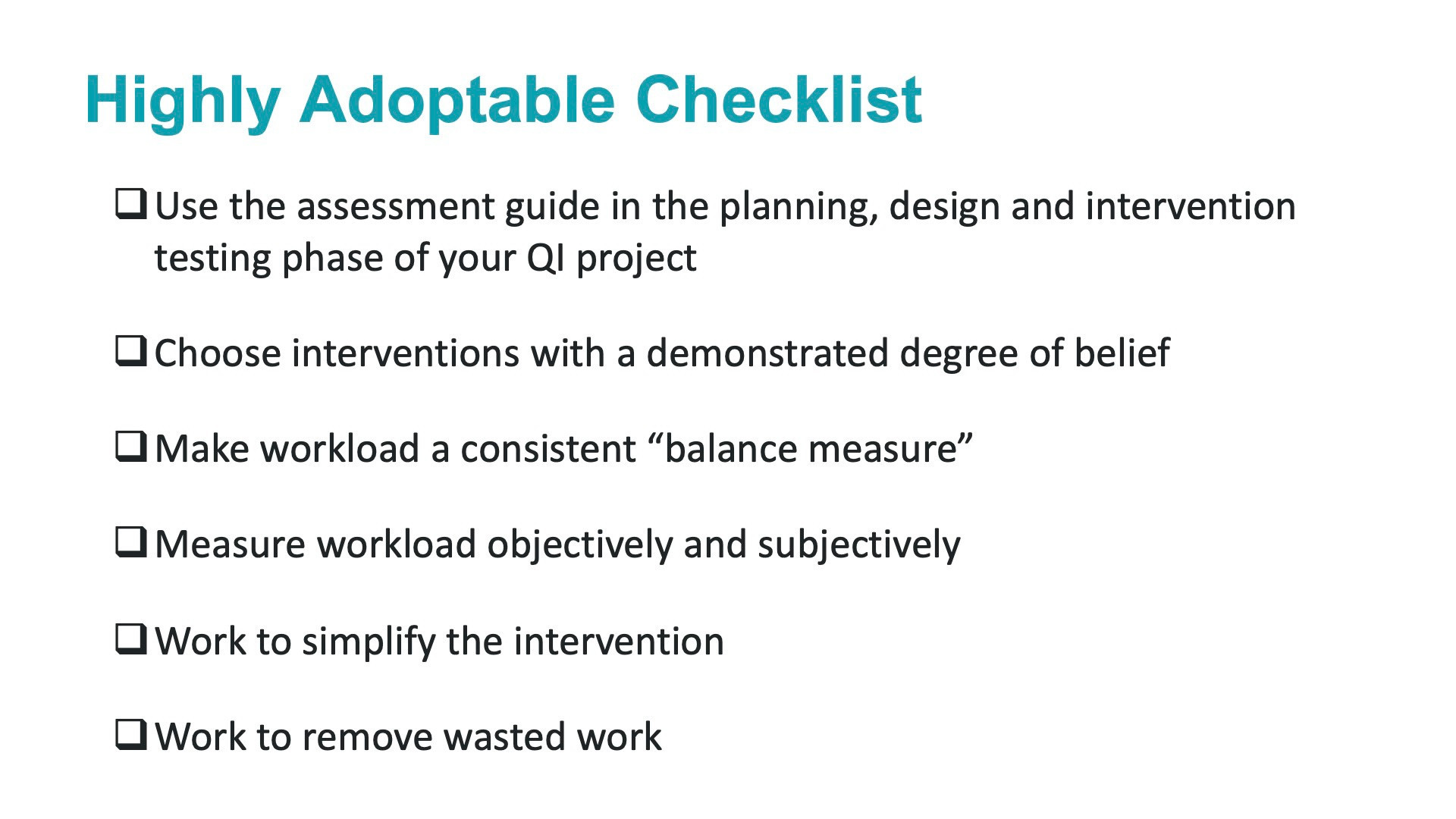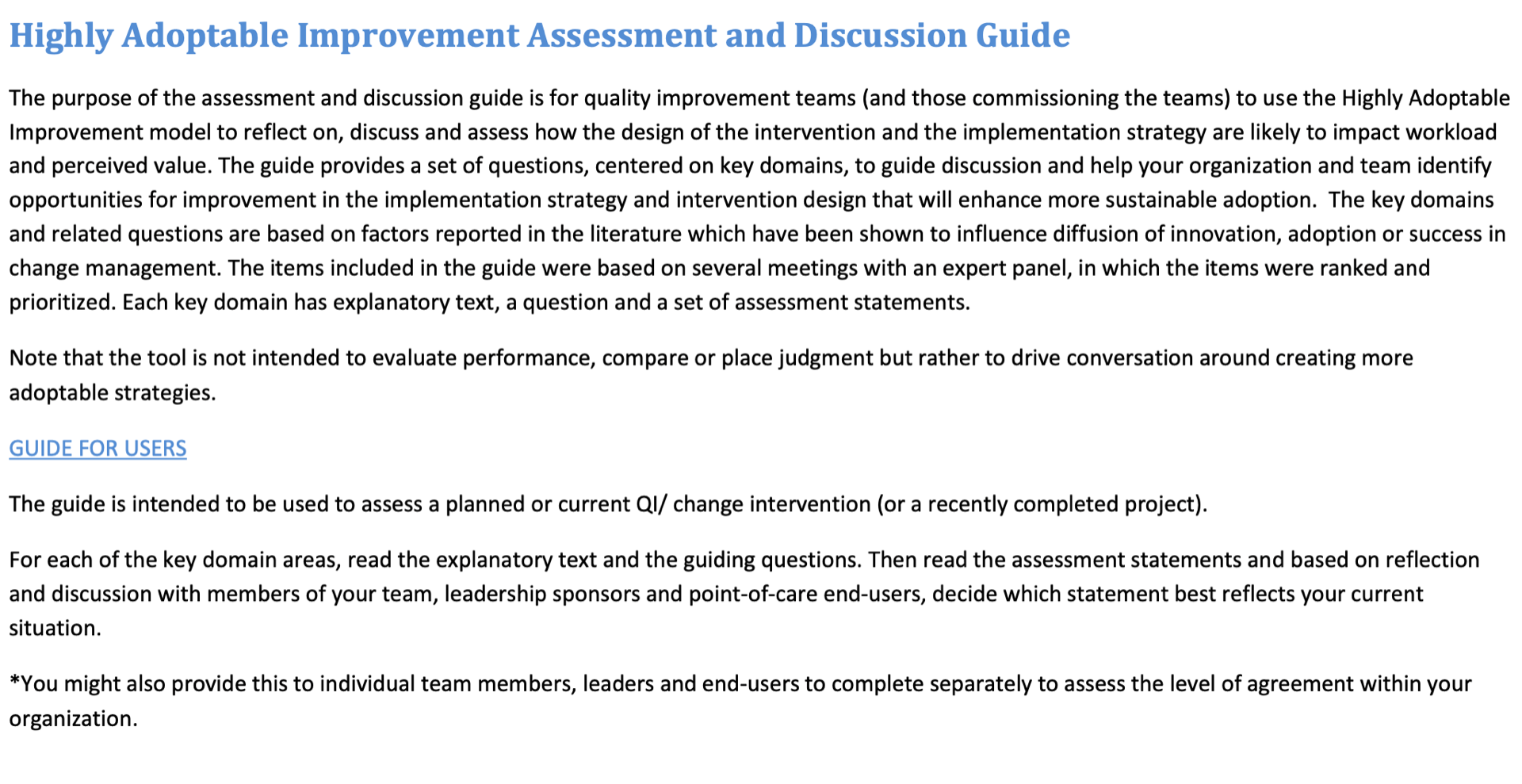Highly Adoptable Improvement Model
The Highly Adoptable Improvement Model illustrates how the design of a quality improvement (QI) initiative and the strategy by which it is implemented directly contribute its adoptability. The person icon represents those required to adopt the change/tasks associated with the QI initiative.
The 'red path' depicts what happens when the initiative induces increased workload and has low perceived value - it leads to burnout, change fatigue and workarounds and decreases the likelihood that the intended outcomes will be achieved. This in turn has negative feedback on the change recipients and actively builds resistance.
The 'green path' highlights that QI initiatives that are designed to produce high perceived value and low workload are more likely to be adopted and achieve the intended outcomes. This success has positive feedback on the change recipients and is more likely to create a positive attitude toward ongoing QI efforts.
Assessing & Improving Adoptability
Our research identified 6 thematic elements that were deemed to most influence QI adoption. They are categorized into those associated with the intervention design (what are you asking people to do) and those associated with implementation strategy (how are you asking people to do it)
End-User
Participation
Alignment &
Planning
Resource
Availability
Workload
Complexity
Efficacy
Are end-user staff/ physicians involved in the change?
Does the change initiative align with the organization’s and/or team’s values and goals and has the rollout been planned effectively?
Are the required resources (training, equipment, time, personnel) for the implementation of the change initiative known and will they be made available?
How much workload (cognitive, physical, time) is associated with the intervention?
How complex is the change intervention?
What degree of evidence and belief is there that this intervention will lead to the intended outcome?
The Toolkit (click the images to download material)
Highly Adoptable Checklist
A list of steps / processes to include in creating a highly adoptable QI initiative
Highly Adoptable Assessment & Discussion Guide
This document provides instructions on how to your QI initiative. It is designed to spark discussion amongst your team and leadership and guide discussion towards improving the adoptability of your QI project.
NASA Task Load Index
The NASA TLX is a validated tool designed to measure the subjective workload experiences of users completing processes and tasks. It is available in paper and an app format
Highly Adoptable Suggested Action & Resources
As a resource guide, this document provides links to a list of resources to assist in producing highly adoptable QI initiatives and suggestions on how to use them.
Exercises
These exercises are designed to use at your home organization to help your teams understand the reason for using a Highly Adoptable approach.
Simulated Workload Assessment
This interactive exercise uses the 5S Game and the NASA TLX tool to demonstrate how to measure and aim to reduce subjective workload.
Which Scenario is More Adoptable?




